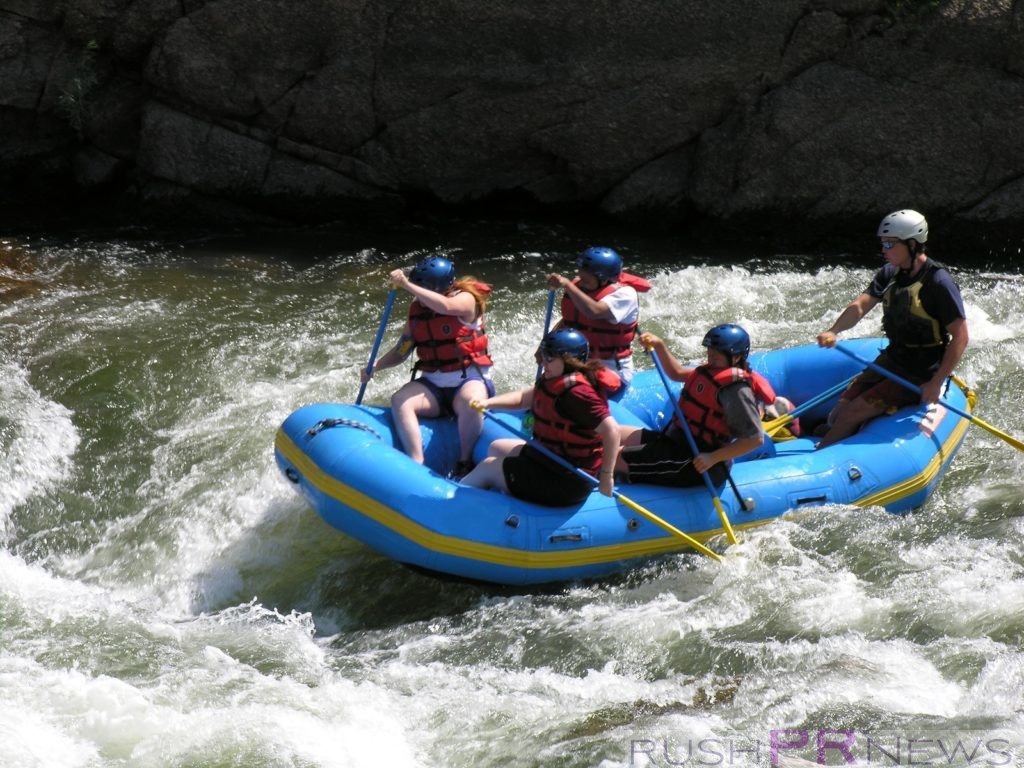Whitewater rafting has become a popular activity for travelers and outdoor enthusiasts. It is a great way for people to not only see beautiful landscapes but experience adrenaline rushes. Like many outdoor activities, it does have its risks. Even a beginner, however, can enjoy whitewater rafting if they do their research so that they are prepared for risks what to expect.
Pick the right trip
Whitewater rafters use a classification system to rank the difficulty of a river, which can be anywhere from Class I to Class VI. The higher the number, the faster the rapids and the more challenging the river will be. Novices should stick to Class I and Class II rivers, which will be fairly smooth and easy to navigate.
Similarly, a beginner will be better off if they pick a guided trip. River guides have been trained on how to safely lead trips, and they know the peculiarities of a given river. They will advise their clients on what they need to do to enjoy a safe trip.
Wear protective gear
It is important that rafters are equipped with the right clothing and gear. Such gear includes a personal flotation device or life jacket and a helmet. The life jacket should be loose enough to allow the rafter to breathe easily, but it shouldn’t be so loose that it can slip over their head. The novice rafter should let the guide check their life jacket to make certain it fits and that they have put it on correctly.
Whitewater rafters should also wear a helmet. The helmet should fit snugly, and it should also be brightly colored to make it easy to spot the rafter if they fall out.
Whitewater rafters should also wear sunscreen and sunglasses. They will be exposed to UV rays even on a cloudy day, so they will need protection. Whitewater rafters should use a strap to secure their sunglasses.
Rafters should also wear shoes that they don’t mind getting wet and that won’t slip off their feet. Old sneakers, sandals with ankle straps, and water shoes are all good options. The last has a hard sole and mesh sides that allow the shoe to drain quickly.
Bring a water bottle
Whitewater rafting is fun and exciting, but it’s also a lot of exercise. Rafters will get thirsty and dehydration will spoil the fun. The prudent rafter will thus bring a water bottle.
Listen to the guide
Before starting, the guide will typically give a talk about what rafters can expect and what safety procedures they should follow. They will include advice about worst-case scenarios like a raft capsizing.
Whitewater rafters should continue listening to the guide after starting the trip. The guide will tell people when they should and should not paddle. They will also tell their clients the correct way to paddle. If someone falls out of the raft, the guide will tell the other rafters what has to be done to retrieve their fellow.
The guide will also teach rafters different commands for handling different situations. For example, if the raft is about to hit a rock, the guide will call “Bump!” The rafters should lean forward and place their T-grip, while still gripping it, on the raft’s floor. If done correctly, the move will keep people from falling out.
Hold the paddle correctly
Both hands should be on the paddle with one hand around the middle of the shaft and the other on the T-grip. The T-grip is the t-shaped handle, and it is typically made of hard plastic. If somebody lets go of the T-grip while going over a rapid, the T-grip could hit another rafter and give them a black eye or knock out a tooth.
Don’t panic
Panicking wastes time and energy. It can also actually make it harder for other people to help. Furthermore, the situation is often not as bad as people fear. For example, when somebody falls out of the raft, they often end up right next to it. They thus simply have to grab onto the raft and let their friends pull them back in.
Panic also impairs a person’s ability to remember what they are supposed to do and increases the chances that they will make a mistake that could make the situation worse.
Whitewater rafting is an exciting activity that the whole family can enjoy. With a little preparation, you can be ready for your next adventure



